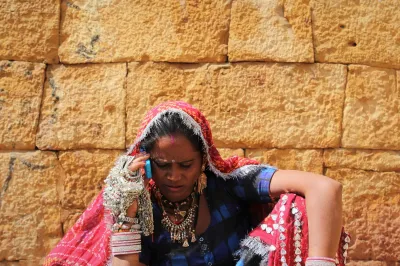Bank-Led Digital Finance: Who’s Really Leading?
In 2006, CGAP distinguished two broad models of digital financial services (DFS) — one led by banks, the other by nonbanks. We quickly realized, however, that many of the so-called bank-led models were not actually led by banks. Rather, nonbanks were taking the lead in establishing and implementing DFS, even though banks remained the legal providers of these services. We therefore began to refer to “bank-based” vs. “nonbank-based” models. Though many more models exist, this dichotomy continues to exist in many markets to this day.

Nonbanks have a crucial role to play in DFS ecosystems, because they can often reach the mass market better than banks. Yet in many countries, they are prohibited from issuing e-money as an independently licensed and supervised entity. We recently published "Basic Regulatory Enablers for Digital Financial Services," which summarizes our experience with four basic regulatory enablers that have guided our work in creating appropriate DFS regulatory frameworks in 10 countries across Africa and Asia. The first of these enablers is the creation of a specialized licensing window for nonbank DFS providers to issue e-money accounts. Yet four of the 10 countries we worked in decided to allow only the bank-led model.
On the face of it, this means that these countries have not implemented one of the four enablers. In reality, nonbanks have found ways to play a leading role even in these regulatory environments, calling into question whether these “bank-led” ecosystems are bank-led at all and reinforcing the important role nonbanks play in financial inclusion.
Pakistan
Pakistan’s first branchless banking regulations were issued in 2008. They clearly stated that “only [the] Bank-led Model of [branchless banking] is allowed. [The] Nonbank-Led Model will be opened up after the players and stakeholders attain [the] necessary level of maturity and after putting in place necessary controls.” Despite being barred from DFS, mobile network operators (MNOs) were more interested than banks in launching branchless banking services.
Rather than waiting for regulations to change, the leading MNOs either bought a majority stake in an existing bank or set up a new bank that they fully owned. The regulations made this possible by allowing not only commercial banks, but also microfinance banks, to offer digital services. Microfinance banks are subject to much lower absolute capital requirements than commercial banks, which makes it feasible for MNOs to enter the space. As a result, all MNO-owned banks in Pakistan today are microfinance banks.
MNOs are playing a big role in Pakistan’s DFS “bank-led” ecosystem through these banks. The latest data show that the country’s two largest DFS providers are Telenor and Mobilink Microfinance Bank — both fully owned by MNOs until recently, when Chinese tech giant Ant Financial announced its purchase of a 45 percent stake in Telenor Microfinance Bank. Together, these banks account for 88 percent of active accounts, 85 percent of transaction volume and 79 percent of the transaction value. Interestingly, when DFS regulations were revised in 2011, the reference to the nonbank-led model being allowed at a later date was dropped.
Bangladesh
Similar to the situation in Pakistan, Bangladesh’s Mobile Financial Services Guidelines (2011) state that “from [the] legal and regulatory perspective, only the bank‐led model will be allowed to operate.” Unlike Pakistan, however, Bangladesh does not allow microfinance banks or other lower-tier banks with lower capital requirements. Nor does Bangladesh permit MNOs or other nonbanks to buy or set up full-fledged commercial banks, because banks are subject to strict single ownership limits that prevent nonbanks from holding a controlling stake. Despite these restrictions, however, nonbanks have found another way to enter the DFS market.
A provision in the guidelines that allows banks’ subsidiaries to operate mobile financial services has opened space for nonbanks to get involved. The country’s top DFS provider, bKash, is 51 percent owned by BRAC Bank, but a nonbank, Money in Motion, has been a minority investor since bKash’s inception. Money in Motion is owned by leading tech entrepreneurs and has had significant influence on bKash’s strategy and operations, even providing its CEO. Other minority investors have also joined: IFC, Bill & Melinda Gates Foundation and, most recently, Ant Financial. By and large, bKash controls its own fate and is a nonbank e-money issuer in all but name. This supposedly “bank-led” entity has acquired a dominant position in the market, with an estimated market share of 80 percent.
Uganda
Uganda also lacks a licensing window for nonbank e-money issuers, but it allows nonbanks to offer “mobile money services” (the term used in Uganda) in partnership with banks. The country’s 2013 Guidelines require nonbanks to “partner with a licensed institution [a bank or other type of prudentially regulated deposit-taking institution], which must apply to Bank of Uganda seeking approval for the provision of mobile money services in partnership with the mobile money service provider.” This means that even though a bank is behind every mobile money offering as the licensed entity, it is always a nonbank designing the service and issuing customer accounts.
India
The fourth country that took a bank-led approach, India, is a different story. In 2015, India created payments banks to offer basic payments and savings services to low-income customers in a more cost-efficient way than commercial banks. As limited-purpose banks, payment banks are subject to lower prudential requirements than commercial banks, but are barred from extending credit. Many of these banks are owned by a range of nonbank entities with prior experience in payment services, such as MNOs, the India Post, agent companies and prepaid payment issuers. One question is whether they will have the kind of flexibility and limited prudential controls that have permitted nonbank e-money issuers in other markets to take off. We will soon publish a report comparing these two approaches of creating a regulatory niche for financial institutions to provide basic transaction accounts for low-income people.
Looking at these countries’ experiences, I wonder whether it would have been better to directly license and supervise nonbanks instead of assuming that banks would play the leading role. This would have made it easier for nonbanks to enter the space and allowed regulators to focus on controlling the much more limited risks of e-money issuers in comparison to full-fledged banks intermediating public deposits. Bank-led? With the possible exception of India, where it may be too early to draw conclusions from the payments banks’ experience, digital finance in these countries has been bank-based and nonbank-led.




Comments
Non banks with positive
Non banks with positive regulatory approach can be very positive since they have a low cost model and easy reach to local community. In India many such institutions started as NGOs and they are still struggling with new laws on micro finance. The issue is of trust and positive regulation. undortunately the bigger platers gave greater access to regulators. Yet an optimism is based on technology front-ending. But the main concern being 'what if' regulation.
Hi Syed Kamran, thanks for
Hi Syed Kamran, thanks for your comment. You raise an important point about nonbanks' involvement and their advantages in reaching local communities. In our study, we haven't specifically looked at rules applying to microfinance institutions, but they might need similar adjustments to take full advantage of technology on the customer front-end than banking regulations.
Thanks stefan for your write
Thanks stefan for your write-up,
In country like Bangladesh, where only bank-led model is allowed to run MFS, Banks are continuously facing challenges to offer low cost services to market. I believe service costs can be reduced if Mixed-Model is practiced where Banks & Non-bank organizations would work together and offer lower cost MFS services for better financial inclusion.
In the context of …
In the context of prevailing demographics in the informal sector embedded in basic innumeracy (leave alone financial & digital) , Digital Financial Inclusion thrust be it bank/non bank led or based , is harmful. It is immaterial who leads?Evidently after digital inclusion, many accounts remain inoperative or dormant ones ( as in the case of PMJDY a/c a/c in India ) Here the concern is not medium of delivery but after inclusion what happened?The poor clients of MFIs need more integrated micro financial products like savings, credit, insurance ,pension , capability building etc which could not be delivered digitally
Any technology infusion is introduced, it should be articulated only on demand oriented and not supply based.
Add new comment